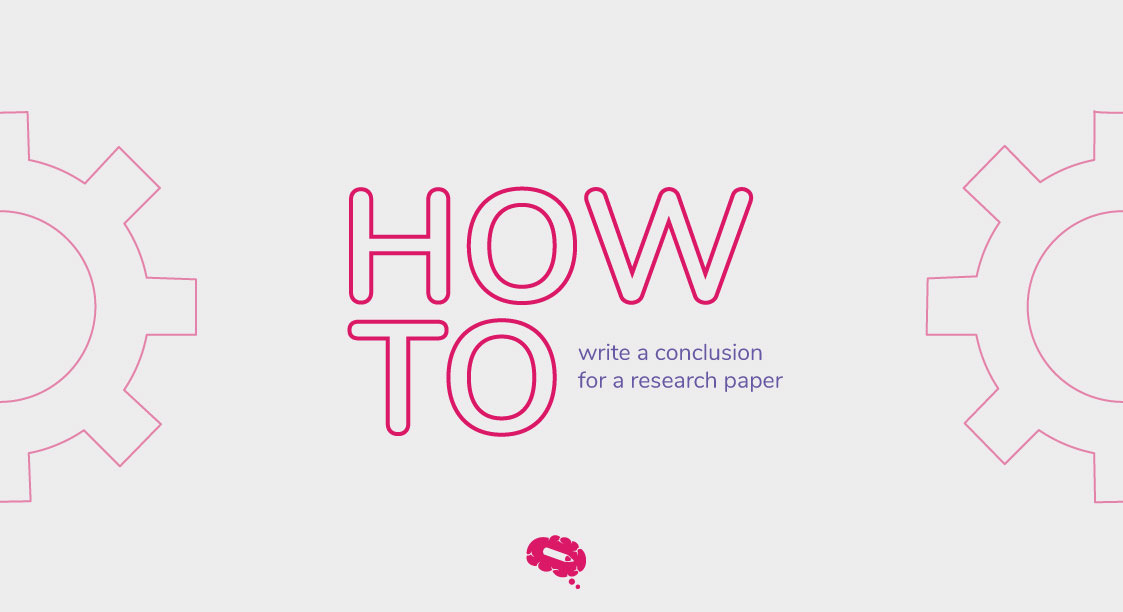When writing a research paper, it can be challenging to make your point after providing an extensive amount of information. For this reason, a well-organized conclusion is essential.
A research paper’s conclusion should be a brief summary of the paper’s substance and objectives; what you present in your research paper can gain impact by having a strong conclusion section.
In this Mind The Graph article, you will learn how to write a conclusion for a research report in a way that inspires action and helps the readers to better understand your research paper. This article will provide you the definition and some broad principles before providing step-by-step guidance.
What is a conclusion for a research paper and why is it important?
A conclusion is where you summarize the main points and, if appropriate, make new research suggestions. It is not merely a summary of the key points discussed or a rehash of your research question.
The reader is expected to comprehend from the article’s conclusion why your study should be significant to them after reading it. A conclusion of one or two well-developed paragraphs is appropriate for the majority of research papers; however, in a few unusual cases, more paragraphs may be required to highlight significant findings and their importance.
Just as the introduction is responsible for giving the reader a first impression on the subject, the conclusion is the chance to make a final impression by summarizing major information of your research paper and, most often, giving a different point of view on significant implications.
Adding a strong conclusion to your research paper is important because it’s a possibility to give the reader the comprehension of your research topic. Given that the reader is now fully informed on the subject, the conclusion also gives you a chance to restate the research problem effectively and concisely.
Examples of conclusions for a research paper
Now that you are aware of what a conclusion is and its significance for a research paper, it is time to provide you with some excellent samples of well-structured conclusions so you may get knowledge about the type of conclusion you can use for your research paper.
Argumentative Research Paper Conclusion
The most convincing arguments from your research paper should be added to the conclusion if you want to compose a strong argumentative conclusion.
Additionally, if your thesis statement expresses your perspective on the subject, you should think about restarting it as well as including any other pertinent information.
Example: As a result of the sixth extinction, which is currently affecting Earth, many species are vanishing every day. There are at least three strategies that people could employ to keep them from going extinct entirely in the ensuing fifty years. More recycling options, innovative plastic production techniques, and species preservation could save lives.
Analytical Research Paper Conclusion
The first thing you should do is reiterate your thesis and list the main elements of your arguments.
There should undoubtedly be a spotlight on a bigger context in the analytical research paper conclusion, which is the key distinction between it and other types of conclusions. It means you can add some meaning to the findings.
Example: Elon Musk has revolutionized the way we drive, pay for things, and even fly. His innovations are solely motivated by the desire to simplify things, but they inevitably alter the course of history. When Musk was a student, he had his first idea for PayPal, which is now among the most widely used methods of online payment. Likewise with Tesla automobiles.
Comparative Research Paper Conclusion
The conclusion of a comparative essay should be deeply analytical. To clearly express your conclusions, you must be very thorough when reviewing the data. Furthermore, the sources must be reliable.
A paraphrased thesis statement and a few sentences describing the significance of your study research are also required, as per normal.
Example: Gas-powered vehicles are ineffective and inefficient compared to electric vehicles. Not only do they emit fewer pollutants, but the drivers also get there more quickly. Additionally, gas cars cost more to maintain. Everything stems from the details of the far more straightforward engines used in electric cars.
How to write a conclusion for a research paper
In this section, you will learn how to write a conclusion for a research paper effectively and properly. These few easy steps will enable you to write the most convincing conclusion to your research paper.
1. Remember about the main topic
The statement must be written clearly and concisely to be effective, just one sentence. Remember that your conclusion should be concise and precise, expressing only the most important elements.
2. Reaffirm your thesis
Restate the research paper’s thesis after that. This can be done by going back to the original thesis that you presented in the research’s introduction. The thesis statement in your conclusion must be expressed differently from how it was in the introduction. This section can also be written effectively in a single sentence.
3. Sum important points in a summary
It’s time to make a list of the important arguments in your research paper. This phase can be made simpler by reading over your research and emphasizing only the main ideas and evidence.
Remember that the conclusion should not contain any new information. Focus only on the concepts you cover in your paper’s main body as a result. And also, keep in mind that this brief summary reminds your readers of the importance of the topic you are researching.
4. Emphasize the importance
At this stage, you can genuinely express a few words about how significant your arguments are. A succinct but impactful sentence can successfully achieve its aim. You could also attempt to examine this circumstance from a wider perspective.
Give an example of how your discoveries have affected a certain field. It would be beneficial if you made an effort to answer the question, “So what?” if there was any ambiguity.
5. Finish up your argument
As you wrap up your conclusion, consider posing a question or a call to action that will encourage readers to consider your point of view even further. This sentence can also answer any queries that were not addressed in the paper’s body paragraphs.
In addition, if there is an unresolved question in the main body, this is a fantastic area to comment on.
Common mistakes you should avoid
After learning the fundamentals of producing a strong research paper conclusion, it’s time to learn the common mistakes to avoid.
- Weak conclusion: If your ending is weak, readers will feel dissatisfied and disappointed. Writing ambiguous closing lines for essays also lowers the quality of the paper and the capacity of your arguments to support your main topic.
- Abrupt conclusion: Your research has to be an expression of your writing as a whole, not just a section. Therefore, make sure your thoughts are fully stated.
- Adding new information: Only your research should only be summarized in the conclusion. As the conclusion cannot contain extra information, make sure to offer all of your conclusions and supporting evidence in the body paragraphs.
- Absence of focus: A conclusion needs to be concise and well-focused. Avoid concluding the research with inane or superfluous details.
- Absurd length: Research must be of a proper length—neither too long nor too short. If you write more than is necessary, you can miss the point, which is to revisit the paper’s argument straightforwardly. Additionally, if you write too little, your readers will think you’re being negligent. It should be written in at least one or two whole paragraphs.
Communicate science visually with the power of infographics
Learn about the Mind the Graph tool, a tool to assist the scientific community in better-communicating ideas and data using amazing visual infographics and scientific figures.

Subscribe to our newsletter
Exclusive high quality content about effective visual
communication in science.




